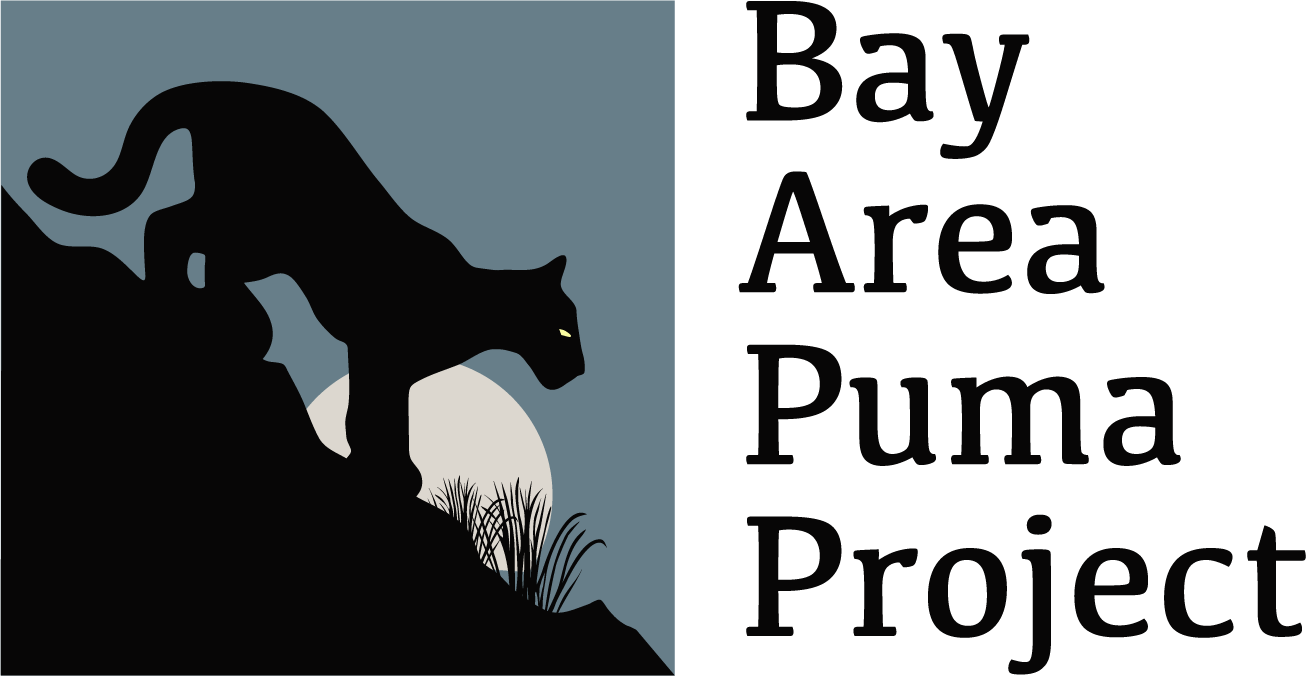Threats to the Puma

Photo courtesy of Trish Carney.
How do humans impact pumas?
How did cougars go from a respected predator to nightmare fuel? In the past, Native Americans had respectful relationships with pumas. They revered them as a part of nature. When European settlers arrived, however, they feared the pumas. They were violent towards them. Throughout the Eastern half of the country, pumas had bounties placed on them. By the early 1900s, they were no longer found in the Eastern half of the continent.
In the 1970s, the west coast began to recognize their importance. They have since become a specially protected mammal. Unfortunately, California is the only state with pumas that also has bans on sport hunting. Human actions are the largest risk to pumas. Here at BAPP, understanding how we impact pumas is the cornerstone of our work.
Threat: Habitat Loss and Fragmentation
Pumas have the largest range of any land mammal. Their range covers hundreds of miles! Humans, unfortunately, also require a lot of space. As our developments take up more of the natural world, our neighborhoods collide with their territory.
This directly causes habitat loss and division. As our populations overlap, we see an increase in sightings, encounters, and reports of cougars hunting pets and livestock. The pumas must adapt to our presence and face a slate of obstacles.
In some areas, such as the Santa Cruz Mountains, the entire ecosystem is at risk. Human development is cutting off the region and turning it into a “habitat island”. This means that the local wildlife would not be able to survive in surrounding areas. It forces them to stay on the “island”. In turn, this causes them to inbreed and hurts the population of the whole ecosystem.
In many cases, development forces pumas to interact more with humans. Pumas are solitary creatures - and very secretive! They don’t like being forced to interact with humans. Unfortunately, our presence in their nature is forcing more significant encounters. This trend threatens the health and stability of local puma populations. It also hurts the comfort of those living near a puma habitat (i.e. the entire Bay Area).
BAPP firmly believes that peaceful coexistence is not only possible, but the ultimate goal! Pumas are not inherently aggressive and humans are more than capable of adaptation. With some simple lifestyle changes, we can help preserve pumas.

Threat: California Depredation Permits
In California, the state law allows livestock and pet owners to get a depredation permit. This is a permit that allows them to kill a cougar that attacks their animals. We have, unfortunately, seen this number steadily increase. In 2021, California issued 182 permits.
To help fight this, BAPP is working to educate pet and livestock owners who live near pumas. Introducing a few simple changes, like keeping pets inside at night and understanding what type of fences and enclosures work against pumas, can prevent encounters, save livestock, improve community tension, and minimize conflict.

Threat: Pumas on Highways
One way we see pumas’ habitats being impacted is by roads. We build highway after highway throughout the state. To reach their territory, pumas must cross the highways. This puts both drivers and pumas at risk.
BAPP is using data to locate frequent crossing points in select areas around the bay. We are working with Caltrans to identify important areas for wildlife underpasses or overpasses, and using our data to guide connectivity solutions.
Threat: Human-Puma Conflict
In recent years, we have seen an increase in the villainization of wild cats. Pumas in neighborhoods are deemed aggressive and officials warn to keep an eye out from them. The media paints them as a threat to public safety.
The reality is, though, dramatic encounters with pumas are rare. When you consider the number of pumas living in the Bay Area, it puts into perspective how rare this is. It goes to show how much pumas want to avoid humans. But we, as a society, have fed into the fear of pumas.
While this fear is understandable, as pumas are an incredibly powerful species, people cannot often identify pumas correctly. And they really don’t want to interact with us! According to the California Department of Fish and Wildlife, 95% of all reported puma sightings are not actually pumas. They are dogs, coyotes, bobcats, racoons, deer....even large house cats.
We are trying so hard to avoid pumas that we are seeing them where they do not exist. The main puma-human conflict is happening in the media and their portrayal of them. This is the issue that needs to be addressed, and BAPP is doing so through community education. As pumas quietly adapt to our presence, successful conflict avoidance happens through education.

Conservation & Coexistence
At the end of the day, BAPP’s goal is to see Bay Area residents living peacefully alongside local pumas. We are using non-invasive field research to understand pumas right where they are. From there, we can provide education to impacted communities. We also work with authorities and other organizations to provide guidance on preserving pumas.
We will continue to fight on behalf of pumas until their future is secured.
